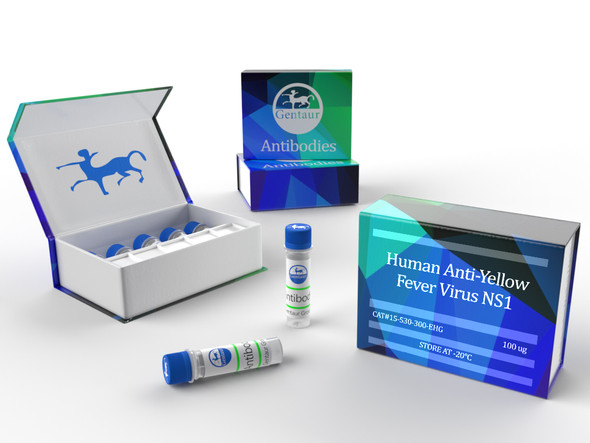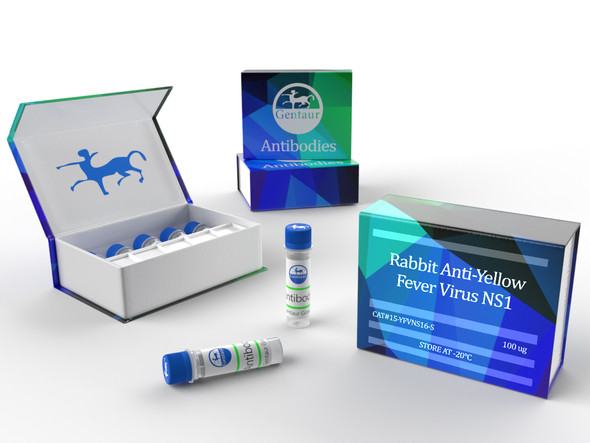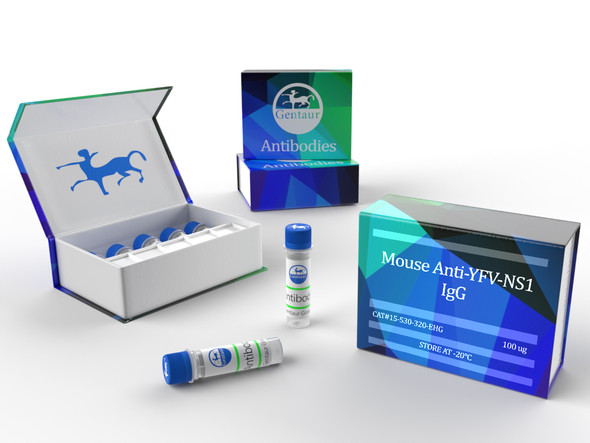Description
MOUSE ANTI-POWASSAN VIRUS NS1 (M837)
Powassan Virus NS1 antibody (clone M837), is a mouse monoclonal antibody that recognises NS1 protein from Powassan virus (POWV). In ELISA assays, the antibody cross reacts with Tick-borne Encephalitis Virus (TBEV) NS1 but does not cross react with other Flavivirus NS1 proteins tested including Yellow Fever virus, Japanese encephalitis virus, Zika virus and Dengue virus NS1.
PRODUCT DETAILS – MOUSE ANTI-POWASSAN VIRUS NS1 (M837)
- Mouse anti-Powassan virus NS1 (IgG2a, clone M837). Recognises Powassan virus NS1 in ELISA.
- Antibody does not cross-react with NS1 from DENV, ZIKV, WSLV, JEV, SLEV, POWV, USUV, WNV or YFV. It shows some cross-reactivity with TBEV.
- Presented in phosphate buffered saline, pH 7.4.
BACKGROUND
Powassan virus (POWV) is a positive-sense single-stranded RNA virus that belongs to the genus Flavivirus, a member of the Flaviviridae family of viruses. It is an arthropod-borne virus that is transmitted by infected ticks to small/medium sized mammals, which act as reservoirs for the virus. Different tick species transmit POWV including hard ticks, of the family Ixodidae, and the tick species varies according to the geographical region. POWV can also be transmitted to humans, which are incidental, dead-end, hosts for the virus (Hermance ME, et al).
POWV is classified as a member of the tick-borne encephalitis sero-complex of flaviviruses. Two genotypes, or lineages, of POWV have been identified in Russia and the Western hemisphere. POWV is assigned to lineage I and Deer tick virus (DTV) to lineage II. Serologically the two viruses are indistinguishable but have some phylogenetic differences. Both lineages have been linked to human disease. Cases of POWV infection caused by POWV lineage II (DTV) are reported to be increasing in North America. The virus is transmitted by the tick Iodes scapularis, which is also the vector for Lymes disease. The expanding distribution of Iodes scapularis and the high seroprevalence of DTV in small mammals, in endemic regions, suggests that POWV may pose an increasing health threat.
First recognised as a human pathogen in 1958, POWV is the cause of a rare neuroinvasive disease. In humans, the incubation period can vary between 1 – 5 weeks. In many cases, individuals remain asymptomatic or may present with a febrile illness with mild fever, sore throat, headache, drowsiness and disorientation. Some patients develop neurological complications, which include encephalitis, aseptic meningitis and meningoencephalitis. Reports suggest that 10% of POWV cases are fatal and 50% of survivors develop long-term neurological problems, which include acute headaches, muscle wasting and memory problems (CDC).
Currently, there is no antiviral therapy for the treatment of symptomatic cases of POWV, and no licensed prophylactic vaccine to prevent POWV infection. Diagnosis of POWV in humans is achieved using clinical criteria and serological methods to measure Powassan specific IgM levels of infected patients.
REFERENCES
- Hermance ME and Thangamani S. (2017). Powassan Virus: An Emerging Arbovirus of Public Health Concern in North America. Vector Borne Zoonotic Dis. 1; 17(7): 453–462.
- Centers for Disease Prevention and Control: Powassan virus










